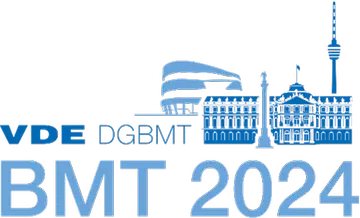58th Annual Conference of the
German Society for Biomedical Engineering
18. - 20. September 2024 | Stuttgart, Germany
Conference Agenda
Overview and details of the sessions of this conference. Please select a date or location to show only sessions at that day or location. Please select a single session for detailed view (with abstracts and downloads if available).
|
|
ID: 357
Abstract
Oral Session
Topics: Neural Implants and Engineering
Area-Selective Etching of Parylene-C on Platinum Surfaces
1Hochschule Furtwangen University, HFU, Germany; 2Albert-Ludwigs-Universität Freiburg - IMTEK
Introduction
In the case of miniaturized neural interfaces, the surfaces are protected with biocompatible insulating polymers except for the microelectrodes. Here, area-selective etching offers the potential to replace error-prone and cost-intensive lithography steps, as the opening above the electrodes can be achieved by catalytic etching. Oxygen diffuses through parylene-C to dissociate atomically on the platinum electrode surface. The resulting reaction partner can etch the parylene-C above it. Parylene-C can be deposited from the gas phase and thus offers an excellent basis for the production of 3D electrodes and geometries.
Methods
Silicon wafers were coated with titanium/platinum and then coated with approximately 250 nm parylene-C. The wafers were placed in a recipient in which the table temperature could be adjusted and in-situ ellipsometry was possible. The wafers were tested for etching under different conditions (oxygen flow, temperature, pressure). Tests were carried out in a vacuum and at atmospheric pressure.
Results
Under a process pressure of up to 250 mTorr and gas flow of up to 100 sccm of oxygen and at temperatures of up to 300 °C, no catalytic etching could be detected using ellipsometry. Catalytic etching only occurred at temperatures above 230 °C and under atmospheric pressure (approx. 750 Torr). Thus, in addition to the temperature, the pressure was crucial for catalytic etching. An etching rate of approx. 11 nm/min could be calculated for the parylene-C on the platinum sample. No etching took place on the silicon sample under the same conditions.
Conclusion
The experiments have shown that selective etching of parylene-C on platinum is possible. This opens up new possibili-ties for the production and encapsulation of 3D electrodes. Not only can the electrode surfaces of platinum be selec-tively opened, but they can also be subsequently selectively coated using the atomic layer deposition process.
Session Details:
32f. Neural Implants and Engineering 2
Time: 20/Sept/2024: 12:00pm-1:30pm · Location: V 9.02
| Simon-Area-Selective Etching of Parylene-C on Platinum Surfaces-357_a.pdf |
|
Contact and Legal Notice · Contact Address: Privacy Statement · Conference: BMT 2024 |
Conference Software: ConfTool Pro 2.8.106+TC © 2001–2025 by Dr. H. Weinreich, Hamburg, Germany |
